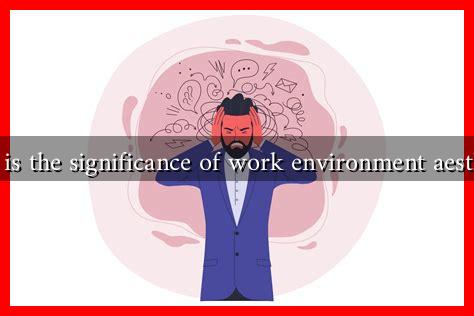-
Table of Contents
What is the Significance of Work Environment Aesthetics?
In today’s fast-paced and competitive business landscape, the aesthetics of a work environment have emerged as a crucial factor influencing employee satisfaction, productivity, and overall organizational success. The physical appearance and ambiance of a workplace can significantly impact how employees feel about their jobs and their performance levels. This article delves into the significance of work environment aesthetics, exploring its effects on employee well-being, productivity, and company culture.
The Psychological Impact of Aesthetics
Work environment aesthetics encompass various elements, including color schemes, furniture design, lighting, and overall spatial organization. These factors can evoke emotional responses and influence behavior in the workplace. Research has shown that a well-designed work environment can lead to:
- Increased Job Satisfaction: A visually appealing workspace can enhance employees’ mood and job satisfaction. According to a study by the University of Exeter, employees in aesthetically pleasing environments reported a 17% increase in well-being.
- Enhanced Creativity: Creative industries, in particular, benefit from stimulating environments. A study published in the journal “Environment and Behavior” found that employees in colorful and well-decorated spaces were more likely to engage in creative thinking.
- Reduced Stress Levels: Natural elements, such as plants and natural light, can significantly reduce stress. A study by the Human Spaces report found that employees with access to natural light and greenery reported 15% higher levels of well-being.
Productivity and Performance
The aesthetics of a work environment can also have a direct impact on productivity. A well-designed workspace can facilitate better focus and efficiency. Here are some ways aesthetics contribute to improved performance:
- Ergonomic Design: Comfortable furniture and layouts that promote good posture can reduce physical strain, allowing employees to work more effectively. Companies like Google and Facebook have invested heavily in ergonomic designs to enhance employee comfort.
- Collaborative Spaces: Open and inviting spaces encourage collaboration and communication among team members. A study by Steelcase found that 88% of employees feel more productive in collaborative environments.
- Distraction Reduction: A clutter-free and organized workspace minimizes distractions, allowing employees to concentrate better on their tasks. Research indicates that employees in tidy environments are 20% more productive.
Company Culture and Employee Retention
The aesthetics of a workplace also play a vital role in shaping company culture. A well-thought-out design can reflect the values and mission of an organization, fostering a sense of belonging among employees. Here’s how aesthetics influence company culture:
- Brand Identity: The design of a workspace can communicate a company’s brand identity. For instance, tech companies often use modern, sleek designs to reflect innovation, while more traditional firms may opt for classic aesthetics.
- Employee Engagement: A visually appealing environment can enhance employee engagement. According to a Gallup report, organizations with high employee engagement levels experience 21% higher profitability.
- Attracting Talent: A well-designed workspace can be a significant factor in attracting top talent. Job seekers often consider the work environment when evaluating potential employers.
Case Studies: Successful Implementation of Aesthetic Principles
Several companies have successfully leveraged work environment aesthetics to enhance employee satisfaction and productivity:
- Airbnb: The company’s headquarters features a design that reflects its brand ethos of belonging and community. The open spaces and vibrant colors foster collaboration and creativity.
- Apple: The Apple Park campus is designed to promote innovation and collaboration, with its circular layout and extensive use of natural light, creating a harmonious work environment.
- WeWork: Known for its stylish co-working spaces, WeWork emphasizes aesthetics to create inviting environments that encourage networking and collaboration among diverse professionals.
Conclusion
In conclusion, the significance of work environment aesthetics cannot be overstated. A well-designed workspace not only enhances employee satisfaction and productivity but also fosters a positive company culture and aids in talent retention. As organizations continue to evolve, investing in the aesthetics of the workplace will be crucial for attracting and retaining top talent. By prioritizing aesthetics, companies can create environments that inspire creativity, collaboration, and overall well-being, ultimately leading to greater success.
For further reading on the impact of workplace design on employee performance, you can explore resources from the Gallup organization.

